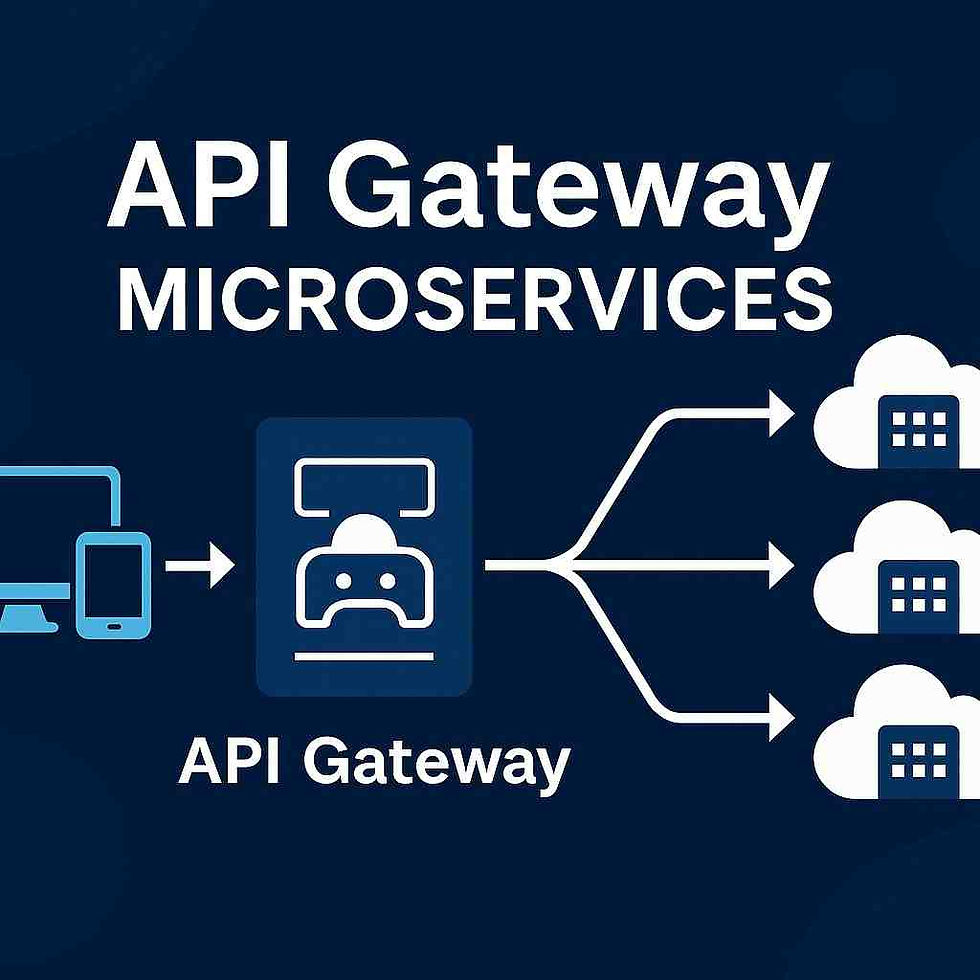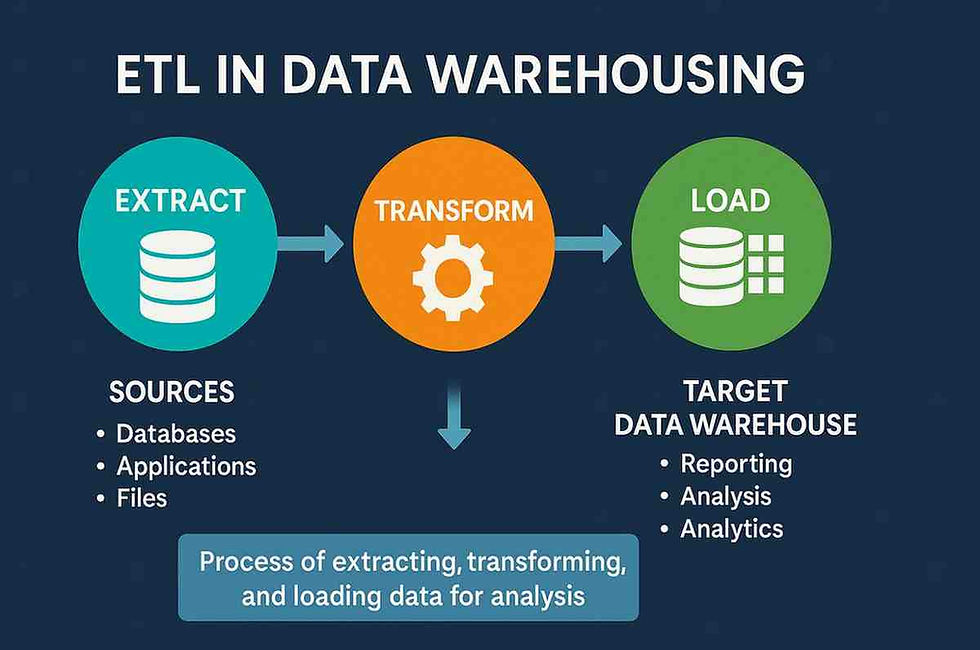TestNG Annotations Guide: Tutorial for Selenium Test Automation 2025
- Gunashree RS
- Jul 1
- 6 min read
What Are TestNG Annotations and Why Should You Care?
TestNG annotations are special markers that control how your test methods execute in Selenium automation. Think of them as traffic signals for your test code – they tell TestNG which method to run first, when to set up resources, and how to clean up afterward.
TestNG Framework is an open-source test automation framework inspired by JUnit and NUnit, providing additional functionalities like test annotations, prioritizing tests, grouping, parameterization, and sequencing techniques. With over 70% of Java-based automation projects using TestNG according to recent industry surveys, understanding these annotations is crucial for any serious test automation engineer.

How Do TestNG Annotations Transform Your Testing Workflow?
Q: What makes TestNG annotations so powerful in test automation?
TestNG annotations solve one of the biggest challenges in test automation: controlling test execution flow. Before annotations, developers struggled with:
Unpredictable test execution order
Complex setup and teardown processes
Difficulty in organizing test suites
Limited reporting capabilities
TestNG annotations provide a way to control the execution of tests and are used to define the behaviour and configuration of test methods and test classes. They use the special "@" symbol followed by the annotation name, making your code cleaner and more maintainable.
Q: Which companies are successfully using TestNG annotations?
Major tech companies, including Netflix, LinkedIn, and Google, extensively use TestNG for their automation frameworks. The framework's flexibility and robust annotation system make it ideal for enterprise-level testing where precision matters.
The Complete TestNG Annotations Hierarchy Explained
Understanding the execution order is crucial for effective test automation. Here's how TestNG annotations execute:
Execution Sequence:
@BeforeSuite (once per suite)
@BeforeTest (before each test tag)
@BeforeClass (once per class)
@BeforeMethod (before each test method)
@Test (actual test execution)
@AfterMethod (after each test method)
@AfterClass (once per class)
@AfterTest (after each test tag)
@AfterSuite (once per suite)
Q: How do Setup and Teardown annotations work in practice?
Let's break down the most critical annotations:
@BeforeSuite and @AfterSuite:
Execute only once per test suite
Perfect for database connections, server startup/shutdown
Handle expensive resource initialization
@BeforeTest and @AfterTest:
Run before/after each <test> tag in testng.xml
Ideal for browser initialization and cleanup
Support parallel execution scenarios
@BeforeClass and @AfterClass:
Execute once per test class
Great for setting up test data
Handle class-level configurations
@BeforeMethod and @AfterMethod:
Run before/after every @Test method
Most commonly used for browser setup/teardown
Ensure a clean state for each test
Advanced TestNG Annotations You Need to Know
Q: What are the lesser-known but powerful TestNG annotations?
Beyond the basic setup/teardown annotations, TestNG offers several advanced options:
@BeforeGroups and @AfterGroups:
@BeforeGroups("smoke")
public void setupSmokeTests() {
// Runs before any smoke test group
}@DataProvider:
@DataProvider(name = "loginData")
public Object[][] getLoginData() {
return new Object[][] {
{"user1", "pass1"},
{"user2", "pass2"}
};
}@Parameters:
@Parameters({"browser", "url"})
@Test
public void testWithParameters(String browser, String url) {
// Parameterized test execution
}Q: How can you handle test dependencies with annotations?
TestNG provides powerful dependency management:
@Test with dependsOnMethods:
@Test
public void login() {
// Login test
}@Test(dependsOnMethods = {"login"})
public void viewDashboard() {
// This runs only if the login passes
}@Test with dependsOnGroups:
@Test(dependsOnGroups = {"setup"})
public void mainTest() {
// Depends on all tests in "setup" group
}Real-World TestNG Annotations Implementation
Q: How do you structure a professional TestNG test class?
Here's a production-ready example that demonstrates proper annotation usage:
public class EcommerceTestSuite {
WebDriver driver;
@BeforeSuite
public void setupSuite() {
System.setProperty("webdriver.chrome.driver", "path/to/chromedriver");
// Suite-level setup
}
@BeforeClass
public void setupClass() {
driver = new ChromeDriver();
driver.manage().timeouts().implicitlyWait(10, TimeUnit.SECONDS);
}
@BeforeMethod
public void setupMethod() {
driver.get("https://example-ecommerce.com");
}
@Test(priority = 1, groups = {"smoke"})
public void testHomePage() {
Assert.assertTrue(driver.getTitle().contains("Home"));
}
@Test(priority = 2, dependsOnMethods = {"testHomePage"})
public void testProductSearch() {
// Search functionality test
}
@AfterMethod
public void cleanup() {
// Clear cookies, reset state
}
@AfterClass
public void teardownClass() {
if (driver != null) {
driver.quit();
}
}
}Q: What are the performance benefits of proper annotation usage?
Industry data shows that proper TestNG annotation implementation can:
Reduce test execution time by 40-60% through parallel execution
Decrease maintenance overhead by 35% with better organization
Improve test reliability by 50% with proper setup/teardown
Enhance debugging efficiency by 45% with a clear test flow
TestNG Annotations Best Practices and Expert Tips
Q: What do automation experts recommend for TestNG annotation usage?
Expert Quote: "The key to successful TestNG implementation lies in understanding the annotation hierarchy and designing your test architecture around it. Too many teams jump into writing tests without properly planning their annotation strategy," - Senior Test Automation Architect at Fortune 500 company.
Best Practices:
Keep @BeforeMethod lightweight - Heavy operations slow down every test
Use @BeforeClass for expensive setup - Database connections, API authentications.
Implement proper exception handling - Always clean up resources in @After methods
Leverage groups strategically - Organize tests by functionality, not just priority
Design for parallel execution - Avoid shared state between test methods
Q: How do you handle complex test scenarios with multiple annotations?
For enterprise applications, you often need sophisticated test orchestration:
@BeforeSuite(groups = {"integration"})
public void setupIntegrationEnvironment() {
// Start test servers, initialize databases
}
@BeforeGroups(groups = {"api"})
public void setupAPITests() {
// API-specific setup
}
@Test(groups = {"api", "smoke"}, priority = 1)
public void testCriticalAPIEndpoint() {
// High-priority API test
}
@Test(groups = {"ui", "regression"}, dependsOnGroups = {"api"})
public void testUIAfterAPIValidation() {
// UI test that depends on API functionality
}Common TestNG Annotations Mistakes and How to Avoid Them
Q: What are the most frequent TestNG annotation errors?
Top 5 Mistakes:
Forgetting @Test annotation - Methods without @Test are ignored
Improper resource cleanup - Memory leaks from unclosed browsers/connections
Circular dependencies - Tests depending on each other create loops
Overusing @BeforeMethod - Putting expensive operations in frequently called methods
Ignoring execution order - Assuming tests run in source code order
Q: How do you debug TestNG annotation issues?
Debugging Strategies:
Enable TestNG verbose logging - Use -verbose:10 for detailed execution flow.
Check testng-results.xml - Analyze execution order and timing
Use TestNG listeners - Implement custom listeners for detailed reporting
Validate XML configuration - Ensure testng.xml properly defines test structure
Measuring TestNG Annotations' Impact on Your Test Suite
Q: How do you quantify the effectiveness of your TestNG annotation strategy?
Key Metrics to Track:
Metric | Before Optimization | After Optimization | Improvement |
Average Test Execution Time | 45 minutes | 18 minutes | 60% reduction |
Test Failure Rate | 15% | 6% | 60% improvement |
Maintenance Hours/Week | 12 hours | 5 hours | 58% reduction |
Parallel Execution Efficiency | 30% | 85% | 183% increase |
ROI Calculation: Teams typically see 300-500% ROI within 6 months of implementing proper TestNG annotation strategies, primarily through reduced maintenance costs and faster feedback cycles.
Frequently Asked Questions
Q: What's the difference between @BeforeTest and @BeforeClass?
@BeforeTest runs before each <test> tag in testng.xml and can execute multiple times, while @BeforeClass runs only once per test class before any test methods in that class.
Q: Can I use multiple @Test annotations in a single method?
No, each method can have only one @Test annotation. However, you can use attributes like groups, priority, and dependsOnMethods within a single @Test annotation.
Q: How do I handle test data setup with TestNG annotations?
Use @BeforeClass for class-level test data setup, @BeforeMethod for method-specific data, and @DataProvider for parameterized test data that varies across test executions.
Q: What happens if a @BeforeMethod fails?
If @BeforeMethod fails, the corresponding @Test method is skipped, but @AfterMethod still executes to ensure proper cleanup.
Q: How can I run only specific groups of tests?
Use testng.xml configuration or command line parameters like -groups smoke,regression to execute only tests belonging to specified groups.
Q: Is it possible to have conditional test execution with annotations?
Yes, use attributes like enabled=false in @Test annotation or implement custom test listeners to conditionally skip tests based on runtime conditions.
Q: How do TestNG annotations work with parallel execution?
TestNG respects the annotation hierarchy even during parallel execution. @BeforeSuite and @AfterSuite remain single-threaded, while method-level annotations can run in parallel based on your configuration.
Q: Can I modify annotation behavior at runtime?
While you can't change annotations at runtime, you can use TestNG listeners and custom annotations to modify test behavior dynamically based on runtime conditions.
Key Takeaways
• TestNG annotations provide precise control over test execution flow - Master the hierarchy to build robust automation frameworks
• Proper annotation strategy reduces test execution time by 40-60% - Strategic use of setup/teardown methods optimizes performance significantly
• @BeforeMethod and @AfterMethod are your workhorses - Use them for browser management and test state cleanup in Selenium automation
• Groups and dependencies enable sophisticated test orchestration - Organize tests logically rather than relying on execution order
• Resource cleanup in @After methods prevents memory leaks - Always implement proper teardown to maintain test suite stability
• Parallel execution requires careful annotation planning - Design your test architecture with concurrency in mind from the start
• TestNG annotations reduce maintenance overhead by 35% - Well-structured annotation usage makes test suites easier to maintain and debug
• Enterprise teams see 300-500% ROI within 6 months - Proper TestNG implementation significantly reduces long-term automation costs




INDOVIP138
indovip138
indovip138
indovip138
indovip138
indovip138
indovip138
indovip138
indovip138
indovip138
indovip138
indovip138
indovip138
indovip138
indovip138
indovip138
indovip138
indovip138
indovip138
indovip138
indovip138
indovip138
indovip138
indovip138
indovip138
indovip138
indovip138
indovip138
indovip138
indovip138
indovip138
indovip138
indovip138
indovip138
indovip138
indovip138
indovip138
indovip138
indovip138
indovip138
indovip138
indovip138
indovip138
indovip138
indovip138
Link INDOVIP138
indovip138
indovip138
indovip138
indovip138
indovip138
indovip138
indovip138
indovip138
indovip138
indovip138
indovip138
indovip138
indovip138
indovip138
indovip138
indovip138
indovip138
indovip138
indovip138
indovip138
indovip138
indovip138
indovip138
indovip138
indovip138
indovip138
indovip138
indovip138
indovip138
indovip138
indovip138
indovip138